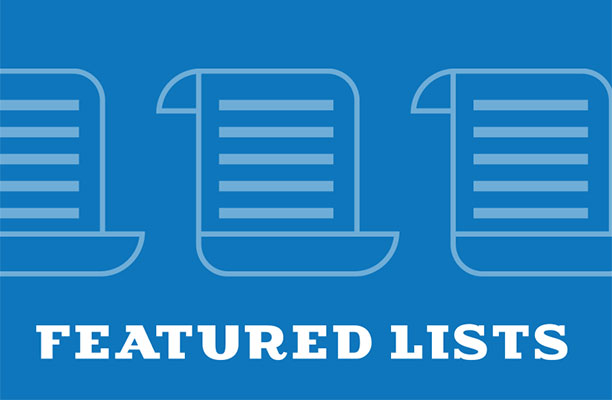Library History
On February 15, 1830 nearly 100 Gloucester residents met and formed the Gloucester Lyceum. The purpose of the organization was to bring community members together to participate in lectures and debates which fostered ideas and information. Among the many intellectual luminaries of the day who appeared were Henry David Thoreau, Ralph Waldo Emerson, and Oliver Wendell Holmes.
The Lyceum inevitably led to the formation of a library. In 1850, a local businessman and philanthropist, Samuel E. Sawyer, offered the Lyceum $100 if additional funds could be raised to develop a library collection. With additional support from Mr. Sawyer and funds donated by the public, a library collection of 1,400 volumes was established by 1854. When all but 300 of its 3,000 volumes were lost in a major downtown fire in 1864, Mr. Sawyer stepped in and added $500 to the insurance settlement to rebuild the collection. Again, in 1871 he made another gift of $10,000.
Membership fees were suspended and the library was officially named The Sawyer Free Library. The library did not yet have a permanent home. Several different locations and another major fire followed in the course of the next decade. In 1764 Thomas Saunders, a merchant and state representative built a sturdy house on the corner of Dale Avenue and Middle Street. Subsequently, the house passed through several owners and further architectural enhancements. In 1884 Mr. Sawyer purchased this prominent residence and donated it to the library corporation. At the dedication ceremony on July 1, 1884. Mr. Sawyer explained the reasons for his generosity: “It has always been a prominent motive or object of my life to do something to promote the best interests of the young, for in them lie the germ, the roots and fibres (sic) of civilization. Books are the food of the mind; from the earliest years of childhood books are sought to feed the intellect, and so from school to college; later on they are a course of recreation to the idler, the tools of the student, the scholar and the man of letters.”
For almost 100 years this structure was home to the city’s library. However, as the city’s population increased so did the public’s use of its library. Despite the addition of a new book wing in 1913 and an addition of a Children’s Library in 1915, the building became seriously inadequate to meet the needs of the reading public, especially the students. Raising sufficient funds to operate the library has always been an ongoing challenge. By the 1930’s the trust left by Mr. Sawyer was no longer sufficient to sustain the library. In 1938 the city began to provide a small but necessary amount of funding in order that residents could continue to enjoy the benefits of a free public library.
By 1973 it was obvious to all that Gloucester must have a larger modern library facility. An agreement was reached between the board of directors and the city administration to jointly fund the expansion. The library corporation raised $500,000 in donations while the city appropriated $650,000 and $150,000 came from the federal government. From this partnership came the renovated facility which opened in 1976.
Today, the Gloucester Lyceum & Sawyer Free Library continues as a public charitable corporation as designated under a charter granted by the Commonwealth of Massachusetts June 10, 1872. Its purpose is to promote and enhance the Library’s grounds and facilities, resources, programs and services. The library continues to be governed by members of the corporation comprised of community members interested in the library and its mission. Corporators elect new members at the annual meeting as well as a president, vice-president, treasurer, and clerk who comprise the executive committee. In total 15 corporators are elected to the board of directors; the mayor participates ex officio. The board is the policy-making body with special subcommittees designated to address specific issues.
In 2017, the Board of Trustees embarked on an ambitious capital plan to renovate the 1976 building and expand the facility with a new 15,000 sq. ft. addition. Visit the 2025 Sawyer Free Library webpage to learn more.
The Saunders House
The Saunders House is an outstanding example of a mid-nineteenth century home built in Gloucester. It has been the home of the Sawyer Free Library since 1884. The house was constructed in 1764 by Thomas Saunders, a successful merchant and a representative to the Massachusetts General Court. The plans for the house were probably acquired from England as many prominent houses from that time were. It reflected Saunders’ success and status in the community and was one of the grandest dwellings in Gloucester.*
The house had seven owners before Samuel Sawyer purchased it for the library. Before this generous donation, the library had a series of different locations including the residential parlor of F.G. Low, 135 Front Street, City Hall, and the Baptist church. As the library grew in popularity all of these sites became unsuitable. It was clear that the library needed its own building. Samuel Sawyer showed interest in buying the Saunders house but he missed his first opportunity in 1878 because he was abroad. His second attempt was successful, buying it from William A. Pew in 1884 for $20,000. The library finally had a permanent home.
Before Samuel Sawyer’s purchase, the house went through many owners and two major renovations. Captain John Beach, an Englishman who purchased the house in 1784, was the first owner to make major changes. His addition of two stories was unprecedented in Gloucester at the time. The top story was an octagonal observatory which no longer exists, nor is there a visual representation remaining.*
General Pew, the seventh owner, added a four-story Italianate Victorian tower to the front of the house. The base of the tower exists today, but was reworked in 1934 to its current configuration as the front entry porch. He also added piazzas and roof balustrades creating a beautiful Victorian mansion.
The house has remarkably retained some of its original features despite 245 years and many owners. The front facade is original, built with rusticated board intended to look like dressed stone. The pedimented window frames are original, as well as its elaborate denticulated cornices. There are areas in the interior that have retained some of their original detail, including the paneled wainscot in the center hall on both floors, the spiral twist turned balusters, and the arched and pilastered compass head window at the upper landing.
For years the Sawyer Free Library has dreamed of repairing and preserving this well-loved house. The plan for the 2025 Saunders House preserves the significant architectural features for historic study and restores the rooms for contemporary community use. The Saunders House will continue to be joined to the Sawyer Free Library and will be open to the public. We hope our patrons and citizens are as thrilled as we are to see the years peeled away to reveal its former grandeur.
*Prudence Paine Fish. Antique Houses of Gloucester (Charleston, SC: History Press, 2007) 29.
WPA Murals in the Saunders House
Among Gloucester’s treasures are its collection of murals painted as part of the Federal Art Project of the 1930s Works Progress Administration. City Hall and The Sawyer Free Library were two beneficiaries of the marriage between a vibrant local arts community and a federal government program.
The interior of this library is recognized as one of the fine examples of Colonial architecture; hence the problem of its decoration was one of fitness. Something was needed that would be adapted to the variety of size and shape of the various wall surfaces and yet have unity. The idea was to be Gloucester, not a photographic representation of particular houses, wharfs, streets, and so forth, but something that would feel like Gloucester.
There must be a harbor; there must be boats and landings; there must be suggestions of its fisheries, boat building, and back of it all, an expression of the surrounding farm life that helped the pioneers to exist while developing the commercial life of the settlement.
The spaciousness of the beautiful harbor seemed to be the big background, and consequently that has been used in a conventionalized way in the large panel of the west wall.
At the foot of the stairs, old buildings and a bit of rocky shore form large simple masses against the water. In the immediate foreground notice the cod-fish drying on the fish flakes. As we pass up the stairway, the space is occupied by fishing boats with spread sails seen against the blue of the harbor and the distant shore. A feeling of distance is obtained by the diminishing size of the boats, seen almost entirely in profile rather than by any lines of perspective which have been avoided as much as possible throughout the decorations.
The horizon for this wall is well up toward the ceiling of the second story and at a point that becomes “eye level” as one reaches the top of the stairs so that as one looks over the balustrade from that point, a feeling of the size of the harbor with the distant shore, of the city, of Rocky Neck, and Ten Pound Island is presented. To the left a bathing beach suggests the recreational features of the place.
On the east wall of the second story is a simplified representation of Dog Town Common with a tumble-down remnant of a cellar, a distant glimpse of the old “Whale’s Jaw”, a few scattered cattle, rocks and dwarf cedars—all that remains to tell the story of this almost mythical settlement of the early days.
Returning downstairs, one has the best view of the long panel on the east wall. At the right is an old building on the wharf at which there are several moored boats. In the shade of great trees, the building of a small schooner is in progress. To the left an old farm house, and a farmer plows with an ox team.
Opposite this panel, the stair wall depicts, the bringing in of the marsh hay. A low, flat, square-end boat called a “gundalow” was loaded with hay and poled in from the marshes to a point where the tide coming up the Squam River relieved the workers of further labor. This work with a pole was called “fudgin”, at this point they were “done fudging” and the place is still known as “Done Fudgin”.
To the left and right in the vestibule are two small panels of a harbor scene, one of the old horse-drawn jiggers, the other the bluff-side stairway from near Union Hill.
The work was done entirely on the bare plaster wall, which being quite uneven gives it a rather antique appearance, harmonizing with the age of the building.
Mr. Stoddard (1861-1940), with the assistance of Howard Curtis (1906-1989), painted the murals as part of the Public Works of Art Program. Frederick Stoddard had a long career of mural painting, with sites including the Bell Telephone Co., St. Louis’s City Hall and Odeon Theater, several New York City public school buildings, and churches and homes in various states. He moved to Gloucester in 1922 and held offices at the Gloucester Society for Artists and the North Shore Art Association. He painted at least ten New Deal murals in Gloucester, including, Give us this Day our Daily Bread, for Central Grammar School, now on view at the O’Maley Middle School, three panels for the Eastern Avenue School, and a series of fish and animals in natural settings at the Forbes School.
In 2022, local conservator Lisa Mehlin of Essex, MA, completed a complete restoration of the Stoddard murals. She holds a Master of Art Conservation, and has seventeen years of experience in the conservation of oil paintings for government agencies, private institutions, and individual clients in the U.S. and Canada. She most recently completed work on the murals in The Stevens-Coolidge House & Gardens for the Trustees of the Reservations in North Andover.
The first phase of the project consolidated the original mural pigment to ensure that it was attached to the plaster. After securing the pigment to the plaster, Mehlin used paints to carefully tone back any white gaps where the paint had flaked away, allowing the original design to shine through once again. The project was funded through Gloucester Lyceum and Sawyer Free Library corporate funds.







